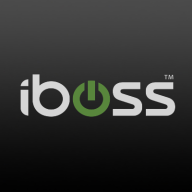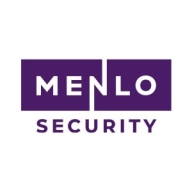


Trend Micro Web Security and Menlo Secure compete in the web security solutions category. While Trend Micro is notable for its cost-effectiveness, Menlo Secure is seen as having the upper hand due to its innovative security approach.
Features: Trend Micro Web Security provides real-time threat intelligence, URL filtering, and data loss prevention. Menlo Secure offers browser isolation technology, secure cloud execution, and active threat mitigation.
Room for Improvement: Trend Micro Web Security could enhance its threat isolation capabilities and improve integration with cloud applications. Menlo Secure can improve logging capabilities, ease of site compatibility, and provide more comprehensive reporting features.
Ease of Deployment and Customer Service: Trend Micro Web Security supports diverse integration options and reliable customer support. Menlo Secure offers rapid deployment and efficient customer service, minimizing compatibility issues with its cloud-native design.
Pricing and ROI: Trend Micro Web Security is cost-effective with a favorable ROI due to its comprehensive features. Menlo Secure requires higher initial investment but delivers significant ROI by reducing cyber threat incidents, appealing to enterprises for long-term security investments.
| Product | Market Share (%) |
|---|---|
| iboss | 2.2% |
| Trend Micro Web Security | 1.0% |
| Menlo Secure | 1.6% |
| Other | 95.2% |



| Company Size | Count |
|---|---|
| Small Business | 6 |
| Midsize Enterprise | 6 |
| Large Enterprise | 5 |
| Company Size | Count |
|---|---|
| Small Business | 13 |
| Midsize Enterprise | 4 |
| Large Enterprise | 4 |
iboss offers a comprehensive security platform designed for diverse use cases such as web filtering, data loss protection, corporate proxy services, and URL filtering.
iboss integrates advanced features to address dynamic security needs, leveraging its strength in SASE, ZTNA, AI initiatives, and cloud integration, while ensuring seamless operations for remote work. It excels in historical forensics, malware protection, and flexible cloud deployments. Users benefit from comprehensive traffic scanning, robust malware detection, and PaaS capabilities that reduce hardware management. An intuitive admin console ensures efficient management with content filtering and low false positives. SSL decryption enhances security, while DLP protects data in AI conversations. Deployment is rapid and scalable, allowing effortless integration with emerging technologies.
What features does iboss offer?
What benefits and ROI should users consider?
iboss finds significant application in sectors such as education, where web filtering for K-12 is crucial, and in corporate environments requiring robust proxy services and URL filtering for network security. Its adaptability is essential in scenarios demanding flexible, decentralized security frameworks, particularly for remote work setups.
Menlo Security Secure Application Access
Menlo Security Secure Application Access makes zero trust access easy, giving users secure connectivity to private applications, including web and legacy applications. At the core of Secure Application Access is the Menlo Secure Cloud Browser, which fetches, secures and delivers the content for users.
In addition to providing simple-to-deploy, clientless ZTA, Secure Application Access and the Menlo Secure Cloud Browser protect applications from attacks such as session hijacking, cookie manipulation, and other tactics that employ protocol manipulation.
Secure Application Access protects applications from Internet threats and provides granular controls for added protection of the application and associated data. These security controls include Read-only/Read-write, Upload/download, Copy/paste, AV scanning, Sandboxing, and Data Loss Prevention.
Last Mile Data Protection
Menlo Last-Mile Data Protection identifies and prevents sensitive data from leaving your company by meticulously inspecting all file uploads and user input across browsing sessions. Leveraging the Secure Cloud Browser, users are protected from the internet and you can protect your organization from data loss with comprehensive traffic monitoring and controls. This approach addresses the growing concerns surrounding data leakage in the age of AI tools like ChatGPT.
By identifying sensitive data through file types, regular expressions, or predefined libraries, Menlo Last-Mile Data Protection empowers security teams to regulate data input into AI platforms and prevent unauthorized uploads. This capability provides crucial protection for intellectual property, PII, and other confidential information.
The solution leverages the Menlo Cloud Security Platform's visibility and control over traffic to reliably detect and prevent data leaks originating from both browser submission forms and non-browser traffic. With the ability to inspect encrypted web traffic, Menlo Last-Mile Data Protection enforces DLP policies consistently across all users and devices, ensuring comprehensive data protection.
Trend Micro Web Security is a cloud-based web security gateway which enables users to focus on strategic security, such as policy and architecture. It provides users with forward-looking threat protection on web threats, URL filtering, and application control. It features cloud app access control, flexible deployment, and a single console that provides advanced security against online threats. Trend Micro Web Security shields your users from cyber threats by employing cross-generational defense methods to detect known and unknown threats. This provides visibility and access control for each of your users on unauthorized cloud applications.
The solution’s innovative deployment strategy allows you to deploy gateways on premises, in the cloud, or both, ensuring that your users are protected no matter where they are. A single cloud-based administration panel streamlines your workload by allowing you to define policies, manage users, and access reporting all from one place.
Trend Micro Web Security Features
Trend Micro Web Security has many valuable key features. Some of the most useful ones include:
Trend Micro Web Security Benefits
There are many benefits to implementing Trend Micro Web Security. Some of the biggest advantages the solution offers include:
Reviews from Real Users
Trend Micro Web Security stands out among its competitors for a number of reasons. Two major ones are its robust access security and its stability. PeerSpot users take note of the advantages of these features in their reviews:
Hartmut S., IT principal consultant, infrastructure architect, and project manager at EDV-SIMON, writes of the solution, “Web Security's most valuable feature is access security.” He adds, “It's secure and useful from an administrative point of view, with controllable login monitoring and so on.”
Nadeem S., CEO at Haniya Technologies, notes, “It's a very stable solution.” He adds, “I would definitely recommend Trend Micro to people looking for an end-to-end security solution. Trend Micro has a good portfolio for security solutions.”
We monitor all Secure Web Gateways (SWG) reviews to prevent fraudulent reviews and keep review quality high. We do not post reviews by company employees or direct competitors. We validate each review for authenticity via cross-reference with LinkedIn, and personal follow-up with the reviewer when necessary.